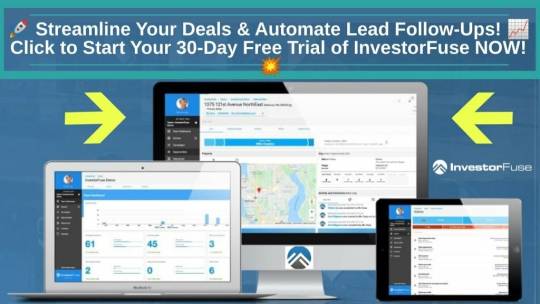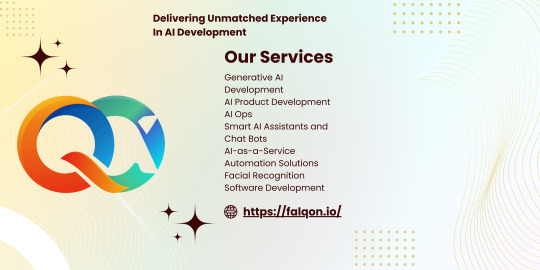#lead automation
Explore tagged Tumblr posts
Text
Missed Deadlines? Lost Productivity? Employee Live Tracking Could Be the Answer
Are you tired and annoyed of chasing after never-ending deadlines? Is your team's productivity lagging? Do you feel that you have lost view of what your staff members are doing during work hours, more so with the emergence of remote and hybrid work models? If your answer is yes to any of these questions, you are the one among many with similar experiences. Companies face these challenges, and the key part is that there is an answer to all of them: Employee live tracking.

It takes smart work, not only hard work, to stay ahead of the curve. Smart work means using technology to make things easier, faster, and reliable. Employee live tracking is not about micromanaging but rather providing tools and insights to build a productive and transparent work culture.
The Productivity Puzzle: Why Are Deadlines Being Missed?
Let's see why people miss the deadlines, before starting with how employee live tracking software will solve these issues. Any of the following explanations can contribute to missed deadlines or lost productivity:
Lack of Transparency: If something is happening without you knowing what employees are working on and how they're spending their time, it might be hard to recognize when they get stuck or need support.
Inefficient Workflows: When processes are overly complex or carelessly designed, time gets wasted and moods become spoiled, and this impacts productivity.
Communication Breakdowns: Between team members, team miscommunication or no communication means delays and mistakes.
Distractions and Time Wasters: Digital distractions abound. From social media to personal emails, distractions abound, if people get distracted during the workday-it can damage focus or production.
Lack of Accountability: If employees fail to make themselves responsible for their time or tasks, this only leads to delays or a lack of deadlines.https://www.youtube.com/embed/FD9UwtJPRP8
Employee Live Tracking: A Solution for the Modern Workplace
Live employee tracking changes the game for these problems by providing a route for real-time visibility of employee activity, improving accountability, and enabling data-driven decision-making.
How Does It Work?
Real-Time View: Live employee tracking gives you a real-time view of what the employees are up to. Their application usage, website visits, and active and idle times information are all tracked by the monitoring system.
Tracking Work Time and Attendance: This tool allows you to keep an accurate track of employee work hours, attendance, and breaks. It prevents the use of manual timesheets, thereby eliminating errors.
Integration with Project Management: A host of employee live-tracking maintains third-party project management software that allows real-time tracking of tasks and projects.
Reports and Analytics: Detailed reporting on employee productivity, time allocation, and project progress can be generated. Such insights will help you to figure out the areas for improvement so that you can make further optimizations to your workflows.
Location Tracking (Optional): Through location tracking, especially for remote employees or field teams, you can gain substantial insight into where and when they are on or off during their duties.
Benefits of Employee Live Tracking
Some benefits that would fall to the organization with the introduction of employee live tracking include the following:
Enhanced Productivity: Employee live tracking allows for real-time insight into employee activities and the recognition of time-wasting activities, ensuring that employees are focused and productive.
Better Accountability: Knowing that their time and activities are being monitored increases the accountability of employee to stick to their tasks and meet project deadlines.
Improved Time Management: Employee live tracking encourages employees to be aware of how their time is being spent and identify areas for improving their time management skills.
Refined Workflow: With all analytical data on employee productivity and time allocation, you can identify problem areas and inefficiencies in your workflow, and work on such areas.
Improved Communication: Employee live tracking sometimes guarantees more open communication among team members during project development and helps to identify the possible blockage.
Data-Driven Decision Making: Analytic and reporting capabilities will empower you to make informed decisions regarding resource allocation, project development, and employee growth.
Cost Reduction: Lastly, with improved productivity and efficiency, less employee live tracking translates into lower labour costs and maximizing profitability.
Addressing Concerns About Employee Live Tracking
It's a natural instinct for employees to have some apprehensions about tracking their activities; some may even consider it to be an invasion of privacy or a symbol of distrust towards them. But it's very important now to advocate for the benefits of tracking as not micromanaging but enhancing productivity and bettering the work environment.
Here are some tips for addressing the concerns of employees:
Be Transparent: The objectives for employee live tracking should always be communicated clearly as to what the tracking data will be used for.
Productivity: Stress that productivity and efficiency are the only goals of the tracking process and not one of monitoring employees in the path of their work.
Respect Privacy: Establish policies that respect the privacy of employees, including not tracking personal time and activities or communications.
Training: Give training to employees about the use of employee live tracking software and data interpretation.
Feedback: Encourage employees to share their opinions and suggestions about the employee live tracking system, and make adjustments wherever they deem necessary.
TrackOlap: Your All-In-One Solution for Employee Live Tracking
Is it an all-encompassing yet easy-to-use employee live tracking solution you are after? Here is TrackOlap for you!
A business tracking tool has undergone a simple configuration yet is extremely powerful in automating entire business functions within no time. With features aimed at boosting sales, handling HR tasks, managing your remote workforce, and managing your IT team, TrackOlap has robust employee live-tracking capabilities.
Here's what TrackOlap brings to the table:
You can see what employees are working on in real time, including the applications they are accessing and the websites they are visiting.
Track employees' working hours, attendance, and breaks, thus eliminating manual timesheet processing and reducing errors.
Integrate TrackOlap into your project management application to gain instant updates on the project or task being worked on.
Generate detailed reports on employee productivity, time consumption, and project advancement.
TrackOlap is user-friendly and intuitive, making it easy to work in within a couple of minutes of installation.
Customize TrackOlap to meet the specific needs of your business.
With TrackOlap, you can:
Increase employee productivity
Improve accountability
Streamline workflows
Data-driven decision-making
Reduce cost
Are You Ready to Make a Business Change?
Don't let deadlines hinder productivity; employees can be tracked within the bounds of TrackOlap as an ignition towards the achievement of your business goals. Contact TrackOlap for more about how simple employee live tracking can turn around the business. Find out more, request a demo , and see how live monitoring of employees can make a difference. Enhance workforce optimization and success using TrackOlap. "Employee live tracking" is the concept through which you can develop your business; you will never regret taking this step. A smart decision is to make the future brighter through employee live tracking.
#employee tracking app#employee time tracking#employee tracking#employee monitoring software#employee tracking software#lead automation#sales automation software
0 notes
Text
Unlock Your Wholesaling Success with InvestorFuse

As a real estate wholesaler, you know the grind all too well. Sifting through countless leads, managing your pipeline, and trying to close deals can feel overwhelming. One major challenge many wholesalers face is keeping track of leads and ensuring that no potential deal slips through the cracks. This disorganization not only wastes time but can lead to lost profits and missed opportunities.
Enter InvestorFuse: Your Ultimate Solution
InvestorFuse is designed specifically for real estate wholesalers looking to streamline their operations and close more deals efficiently. This powerful CRM simplifies lead management by automating follow-ups and organizing your pipeline, so you can focus on what you do best: making deals happen.
Key Benefits of InvestorFuse:
Lead Automation: Say goodbye to manual follow-ups. InvestorFuse automates your communications, ensuring that every lead receives timely attention.
Organized Pipeline: Easily visualize your leads at different stages, allowing you to prioritize effectively and never lose track of a deal.
Enhanced Collaboration: If you're working with a team, InvestorFuse helps everyone stay on the same page, promoting seamless collaboration and improved outcomes.
With its focus on helping wholesalers succeed, InvestorFuse is an invaluable tool for anyone looking to elevate their business. Try it risk-free for 30 days—click here to sign up today and watch your wholesaling business thrive!
For even more insights and resources tailored specifically for real estate wholesalers, visit WholesalingHousesInfo.com. The blog is packed with expert tips, real-life success stories, and essential tools to help you maximize your wholesaling success!
#real estate investing#real estate investment software#real estate investor software#wholesaling houses#real estate investor#real estate wholesaling#real estate crm#freedomsoft review#wholesaling real estate#InvestorFuse#Lead Management#Wholesaling Success#Automation#Business Growth#Real Estate Tools#Lead Generation#Pipeline Management#30 Day Trial#Investor Tools#Lead Automation
1 note
·
View note
Text
#The Lead Generation Process#lead automation#lead management software#lead software#lead management systeml#analytics#optimization#Online_software#software#Lead Generation Mastery
0 notes
Text
🚀 Explore how AI can transform your B2B marketing strategy! Discover actionable tactics to enhance buyer engagement and create personalized experiences. Dive into AI-driven buyer-centric strategies today! #B2BMarketing #AI #BuyerEngagement #DigitalMarketing
#account-based marketing#AI#AI-driven marketing#automated nurturing#B2B marketing#brand awareness#buyer enablement#buyer experiences#buyer journeys#buyer-centric strategies#buying groups#campaign effectiveness#content distribution#conversion rate optimization#customer engagement#data analysis#demand intelligence#digital marketing#engagement#lead generation#marketing automation#marketing insights#multi-touch attribution#omnichannel experience#performance insights#personalization#resource optimization
4 notes
·
View notes
Text
i feel like my apartment is doing experiments on me bc every night they keep introducing new machines that are extremely loud and buzz at uneven intervals all night long. a few weeks ago there was this one that would buzz for 30 seconds and increase in pitch, then abruptly stop, stay off for about a minute, then start again non stop from about 10pm-6am, and last night there was a new one that didnt have any changing pitch but it was obscenely loud and would buzz for about a minute, then be off for a minute before starting up again all night long on repeat and i deadass barely slept because of it but im still just like..WHAT IS THE CAUSE D:
#my leading theories are twofold#dehumidifiers and/or fans for the insane construction in the building#or i was thinking an air mattress with a leak/CPAP machine#what i dont get though is that its not constant and clearly is alternating between on and off#and the on and off intervals are loosely periodic but not actually exact and ive heard some faulty startup buzzes so ????#but it has to be automated bc its literally like 12 hours of this#lord only knows but im going insane it feels like what you would do to someone to keep them awake as torture
15 notes
·
View notes
Text
How to use bard?

Bard is a new AI chatbot from Google which promises to be the source of real-time information and conversational answers to most questions. To deliver coherent, context-aware responses, it relies on Google's Language Model for Dialogue Applications, LaMDA. Bard is fantastic when the topic of interest deals with current events or information that constantly updates-and could answer anything from trivia to facts. It has entered the competitive landscape of AI-driven tools like OpenAI's ChatGPT and Microsoft's Bing AI.
A person can get access to Bard through the Google website and also by searching for "Google Bard" in a browser. After accessing Bard, one can ask questions, make the most of the conversation, receive immediate responses, and share responses for productivity.
On a PC, users access Google Bard via the browser interface. Open Google Chrome, Firefox, or Edge and go to the Google Bard website. Sign in to your Google account to get personalized answers and recall conversation history.
It's pretty easy to start a conversation by starting with Bard, and the users can save the page as a bookmark so as not to visit again.
Bard has gained popularity among students and professionals and curiously inquisitive minds seeking help or information that have quite proved useful.
Google Bard is an AI-powered chatbot that can be accessed directly via a web browser or downloaded from the Google Bard website. To access Bard on the phone, one shall go to the mobile browser and visit the website of Google Bard. Log in using your Google account; type out your question; and activate voice search. To use Bard with Google: Ensure it is available in your location. Please have the latest version of Google Chrome available. Always ensure that you are logged into your Google account. Verification of your privacy settings.
If Bard is not available, some regions have integrated it into Google Search. Open its interface, type your question, try specific queries, ask follow-up questions, and test creative features to ask questions to Bard. Bard can be used for simple routine tasks, challenging questions, and creative work.
Therefore, Google Bard is a friendly and approachable AI chat that tends to make information retrieval as easy as it can be for people. It is decidedly different from any other search engine since it captures real-time data and gives conversational responses. Useful tool for the simplest of tasks or more creative pursuits: Google Bard is an excellent tool in different uses, ranging from mundane day-to-day errands to creative activities, all set for accessing basic tasks or questions that are complex.
#automation tools#b2b lead generation#content marketing#content creator#social media marketing#linkedin automation software
2 notes
·
View notes
Text
🌟 Unlock Business Insights with the Contact Info Scraper 🌟
Looking for a powerful, efficient tool to extract accurate business contact information? Meet the Contact Info Scraper by Dainty Screw on Apify. 🚀
💡 What It Does:
• Extract business emails, phone numbers, addresses, and more from websites.
• Perfect for building targeted outreach lists, lead generation, or enhancing your marketing campaigns.
• Works seamlessly with dynamic and static websites.
📈 Why Choose This Scraper?
• Fast & Accurate: Saves you hours of manual data collection.
• User-Friendly: Easy-to-use interface, even for non-techies.
• Customizable: Tailor the scraper to meet your unique business needs.
🔧 Who Can Benefit?
• Marketers: Boost your outreach campaigns.
• Entrepreneurs: Build B2B connections with ease.
• Freelancers: Gather leads for your clients in no time.
🌐 Start scraping smarter today! Try it now and take your business to the next level.
👉 Check it out here: Contact Info Scraper on Apify
💻 Need Custom Automations? Contact us to build your dream scraper.
#DataScraping #BusinessGrowth #AutomationTools #LeadGeneration #Apify
2 notes
·
View notes
Text
Sales Automation: Streamlining Processes for Efficient Lead Generation
Article by Jonathan Bomser | CEO | AccountSend.com

In today's lightning-paced business ecosystem, the beacon of Sales Automation shines brighter than ever as a transformative force propelling lead generation into a realm of unprecedented efficiency and success. This voyage takes us through seven pivotal strategies that harness the true potential of Sales Automation, ensuring that you harness its power to revolutionize your lead generation journey.
DOWNLOAD THE SALES AUTOMATION INFOGRAPHIC HERE
Implement a Customer Relationship Management (CRM) System
Imagine a command center at your fingertips that orchestrates your lead interactions with finesse. This is where the Customer Relationship Management (CRM) System, the linchpin of Sales Automation, comes into play. This technological marvel enables you to seamlessly centralize customer data, track interactions, and automate tasks with precision. Picture the possibilities as your sales team focuses on nurturing connections that drive conversions.
Utilize Marketing Automation Tools
Bid farewell to labor-intensive marketing efforts as Sales Automation brings forth the magic of marketing automation tools. These remarkable instruments streamline repetitive marketing tasks, from orchestrating email campaigns to nurturing leads and scheduling social media content. By crafting strategic workflows and triggers, you hold the power to deliver tailor-made messages that resonate with your prospects. The outcome? Engagement and conversion rates that soar to new heights.
Qualify Leads with Lead Scoring
In the labyrinth of potential leads, imagine having a compass that guides you to the most promising ones. Enter lead scoring, a beacon of clarity amidst the complexity. Through meticulous criteria encompassing demographic data, engagement metrics, and behavioral patterns, lead scoring empowers your sales team to prioritize leads ripe for conversion. This orchestration of efficiency elevates your conversion rates while maximizing your team's efforts.
Streamline Sales Processes with Workflow Automation
Embrace the liberation from manual, time-consuming sales processes through the elegance of workflow automation. Bid adieu to the mundane tasks of follow-ups, appointment scheduling, and proposal generation. Workflow automation transforms these into seamless symphonies, gifting your sales team precious time. This temporal freedom translates into a focus on nurturing relationships, cultivating an environment primed for deal closure.
youtube
Integrate Sales and Marketing Efforts
The synergy of sales and marketing isn't a mere concept; it's a dynamic strategy made tangible by Sales Automation. Witness the convergence of these vital forces as silos dissolve, and a harmonious collaboration emerges. Valuable insights flow seamlessly, lead progress is tracked cohesively, and communication flourishes throughout the sales cycle. The result? A seamless alliance that fuels conversions and magnifies results.
Implement Chatbots and AI-powered Assistants
In an era where responsiveness defines success, envision AI-powered chatbots as your digital allies. These innovative assistants redefine customer support and engagement by handling routine inquiries, offering instant responses, and even assisting in lead qualification. The outcome? Your team is unburdened, channeling their expertise into intricate tasks that propel your business forward.
Continuously Analyze and Optimize
Success isn't a static destination; it's an evolving journey. Data analysis becomes your compass in the realm of Sales Automation. Regularly delve into the wealth of insights harvested by your automation tools. Decode lead behavior, unravel conversion rates, and unveil sales performance intricacies. Armed with these insights, fine-tune your lead generation strategies, refine processes, and unearth optimization opportunities.
In essence, Sales Automation stands as the cornerstone of lead generation efficiency. Through adopting a CRM system, harnessing marketing automation tools, embracing lead scoring, automating sales workflows, aligning sales and marketing endeavors, integrating AI-powered support, and ceaselessly optimizing strategies, you can reshape your lead generation narrative. Embrace Sales Automation as the lifeblood of your sales strategy, and witness your lead generation expedition thrive with newfound efficiency and efficacy. The time has come to seize Sales Automation and redefine your lead generation journey.
#Sales Automation#Lead Generation#CRM#Business Owners Database#Verified B2B Emails#B2B Contact Database#CEO Email Addresses#Sales Leads Database#B2B Email List#B2B Leads Database#Verified Business Leads#B2B Leads List#businessgrowth#leadgeneration#b2b#accountsend#youtube#entrepreneurship#b2bleadgeneration#b2bsales#businesstips#sales#Youtube
36 notes
·
View notes
Video
youtube
FreedomSoft Lead Swiper Overview YouTube video
#freedomsoft#lead swiper#real estate lead generation#real estate wholesaling#wholesaling real estate#wholesaling houses#real estate crm#real estate investing software#freedomsoft review#lead generation#lead automation#real estate deals#real estate investor software
0 notes
Text
screaming crying throwing up because the period app tracker I've been using for ten years has put almost every single function behind a paywall now
#i just received a popup about a mental health check in and it leads to an automated chat#and then says you need to sign up for premium TO FUCKING ACCESS THE SUPPORT#i bet it's run by a man#rants n rambles
5 notes
·
View notes
Text
Boost Your Outreach with the Best Cold Email Automation Tool in the USA
In today’s competitive business landscape, effective communication is key to building relationships and driving sales. One powerful method for achieving this is through cold email automation. By leveraging advanced tools, businesses can streamline their outreach efforts, save time, and improve response rates.
Why Cold Email Automation?
Cold email automation is essential for scaling outreach efforts. Instead of manually sending emails to prospects, automation tools handle this task efficiently, allowing you to focus on crafting compelling messages and targeting the right audience. This not only boosts productivity but also ensures that your emails reach a wider audience.
Choosing the Best Cold Email Automation Tool
When selecting a cold email automation tool in the USA, consider the following features:
User-Friendly Interface: The tool should be easy to use, with a clear dashboard and intuitive features.
Customization Options: Look for tools that allow you to personalize your emails, which is crucial for engagement.
Analytics and Reporting: Comprehensive analytics help you track open rates, click-through rates, and responses, enabling you to refine your strategy.
Integration Capabilities: Ensure the tool can integrate with your existing CRM and other marketing platforms.

Best SMTP for Cold Email
To maximize the effectiveness of your cold email campaigns, it’s crucial to use the best SMTP (Simple Mail Transfer Protocol) for cold email. A reliable SMTP service ensures your emails are delivered promptly and securely, reducing the risk of your messages ending up in spam folders. This enhances deliverability and ensures your outreach efforts are not wasted.
Benefits of Using an Email Marketing Platform
An email marketing platform that includes cold email automation and the best SMTP for cold email provides several benefits:
Efficiency: Automate repetitive tasks and manage large-scale email campaigns with ease.
Personalization: Tailor your messages to individual recipients, increasing the likelihood of engagement.
Scalability: Handle a growing list of contacts without compromising on quality or performance.
Conclusion
In conclusion, boosting your outreach with the best cold email automation tool in the USA is a smart strategy for any business looking to expand its reach and drive sales. By leveraging the right tools, including a reliable SMTP service and a comprehensive email marketing platform, you can enhance your email campaigns and achieve better results. Start automating your cold emails today and watch your outreach efforts soar.
Visit: www.sendcrux.com
#best cold email marketing agency in the USA#Unlimited email sender USA#bulk email sender USA#Email Marketing#Bulk Emails#SMTP for cold email#cold email automation software#Small Business#Email Automation#Automation Tools#content marketing#Digital Marketing#Marketing Strategy#Email Strategy#Email campaigns#lead generation#bulk email verifier tool#cold email SMTP#email verifier software#email sender#B2B lead generation#bulk email verifier
6 notes
·
View notes
Text
do you ever think about how both the dinosaurs and the automated systems of Jurassic Park fall into chaos? It’s a much larger part of the book, but it’s also the main issue for the second half of the movie. Not only did John Hammond and co plan to monetize the hell out of the delicate science/ethics of extinct animal cloning (in the book he explains that while there’s a cap on how much he can drive up the price of pharmaceuticals, which he had done up until recently, there are no laws about charging people to see cloned dinosaurs on this island outside of any major gov’t), he also automated every last part of the process that he could.
anyway I just think there’s something to be said about the chaotic nature of automated systems (*cough* AI). It’s depressing how relevant the themes of that book continue to be 30+ years later
#long post#iRobot + the story it’s based on has a similar premise of automated systems (groups of androids lead by a ‘motherboard’ AI) having#increasing amounts of quirks#also love these types of AI stories for the human pathos of losing any feigned control you had over your metaphorical child#all good robot stories are Frankenstein to me
22 notes
·
View notes
Text
I sometimes want to be a machinist but my long hair and dangling frilly dresses would get stuck in the lathe
#leading me to a painful and gruesome demise#:(#but I want to machine!!!!!!#manufacturing#automation#would be a cool death tho#but I also want to design and program my own machine too#machining#women who machine
5 notes
·
View notes
Text
youtube
NEW GALLAGHER SINGLE DAY ❤️🔥🎸
#automation band#Lennon Gallagher#uhhh I love this?!#I think Lennon’s on lead vocals which he’s usually not from what I’ve seen#it’s GOOD!#there’s even a little guitar solo and everything!!#Youtube
8 notes
·
View notes
Text
Big Sales Growth: How Our Platform Delivered Real Results?

Neebify is the platform which uses automation coupled with CRM systems for delivering real and measurable results for businesses. It automates getting connection requests, messaging, and follow-ups in line with guidelines on LinkedIn. The other core features include automated outreach, CRM integration, targeting your audience, customized campaigns, and analytics or reporting.
There are high expectations to view LinkedIn automation as a step that can play an important role in today's sales strategy, including sending in connection requests, messages, and follow-ups at mass levels by streamlining the efficiency. In this case, it will make sure to produce even more qualified leads, consistency in engagement, scalability, and even super management of the data.
Yes, a mid-sized B2B software company had a case study that showed how Neebify transformed the entire LinkedIn outreach approach to remarkable sales growth. Neebify explained to the company that they could help it overcome the challenge of a small number of connections, which could not help scale, and a limited reach because their sales force had to send connection requests and follow-up messages manually. Neebify offered them a solution that would allow them to reach more prospects, keep leads engaged consistently, and connect their LinkedIn efforts with their CRM for better management of leads.
In conclusion, Neebify is the future of sales growth automation, as through good automation and proper CRM systems, its use can bring optimum results for businesses in the future.
A B2B software company used Neebify for automated LinkedIn outreach and its integration with their CRM. They used Neebify to send customized connection requests to industry decision-makers and influencers and then followed up automatically with a series of follow-up communications to nurture those connections and move people further down the sales funnel. They hooked up their CRM so sales were spending more time closing deals and less time wrangling data.
Neebify provided advanced filtering features that allowed the company to pinpoint leads of interest with precision based on title, industry, and company size. The company was allowed to create several campaigns on LinkedIn, targeting different aspects of the target audience.
Between three months, the company managed to realize an impressive 200% growth in sales opportunities, and conversion rates improved, leads were handled in a better way, less time spent at work not automated, and data-driven decisions made in a much more efficient way. Among the most outstanding ones was the plan targeting decision-makers in the tech industry where the acceptance rate of connection requests had reached as high as 150%.
By combining Neebify's LinkedIn automation tool with its integration into a CRM, it could potentially really get the sales of businesses sky-rocketing. This is due to the fact that every sales effort would scale while not dropping personalization and efficiency. One good example would be the case of the B2B software company where the right application of automation on a LinkedIn strategy could really reach new heights while bringing in significant, measurable results.
2 notes
·
View notes
Text

artificial intelligence| ai development companies| ai in business| ai for business automation| ai development| artificial intelligence ai| ai technology| ai companies| ai developers| ai intelligence| generative ai| ai software development| top ai companies| ai ops| ai software companies| companies that work on ai| artificial intelligence service providers in india| artificial intelligence companies| customer service ai| ai model| leading ai companies| ai in customer support| ai solutions for small business| ai for business book| basic knowledge for artificial intelligence| matching in artificial intelligence|
#artificial intelligence#ai development companies#ai in business#ai for business automation#ai development#artificial intelligence ai#ai technology#ai companies#ai developers#ai intelligence#generative ai#ai software development#top ai companies#ai ops#ai software companies#companies that work on ai#artificial intelligence service providers in india#artificial intelligence companies#customer service ai#ai model#leading ai companies#ai in customer support#ai solutions for small business#ai for business book#basic knowledge for artificial intelligence#matching in artificial intelligence
2 notes
·
View notes